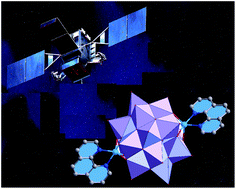Metal–phenanthroline fused Ti17 clusters, a single molecular source for sensitized photoconductive films†
Abstract
Much attention has been paid to titanium

* Corresponding authors
a
College of Chemistry, Chemical Engineering and Materials Science & Key Laboratory of Organic Synthesis of Jiangsu Province, Soochow University, Suzhou 215123, P. R. China
E-mail:
daijie@suda.edu.cn, zhuqinyu@suda.edu.cn
b State Key Laboratory of Coordination Chemistry, Nanjing University, Nanjing 210093, P. R. China
Much attention has been paid to titanium

 Please wait while we load your content...
Something went wrong. Try again?
Please wait while we load your content...
Something went wrong. Try again?
Y. Wu, P. Wang, Y. Wang, J. Jiang, G. Bian, Q. Zhu and J. Dai, J. Mater. Chem. A, 2013, 1, 9862 DOI: 10.1039/C3TA11571B
To request permission to reproduce material from this article, please go to the Copyright Clearance Center request page.
If you are an author contributing to an RSC publication, you do not need to request permission provided correct acknowledgement is given.
If you are the author of this article, you do not need to request permission to reproduce figures and diagrams provided correct acknowledgement is given. If you want to reproduce the whole article in a third-party publication (excluding your thesis/dissertation for which permission is not required) please go to the Copyright Clearance Center request page.
Read more about how to correctly acknowledge RSC content.
 Fetching data from CrossRef.
Fetching data from CrossRef.
This may take some time to load.
Loading related content
